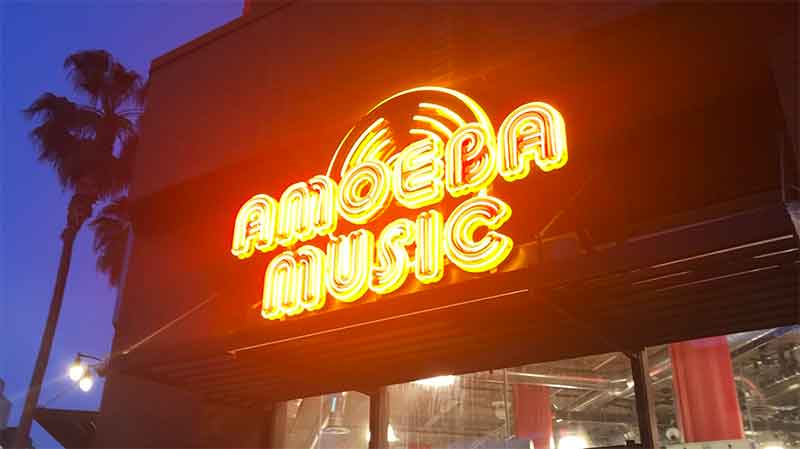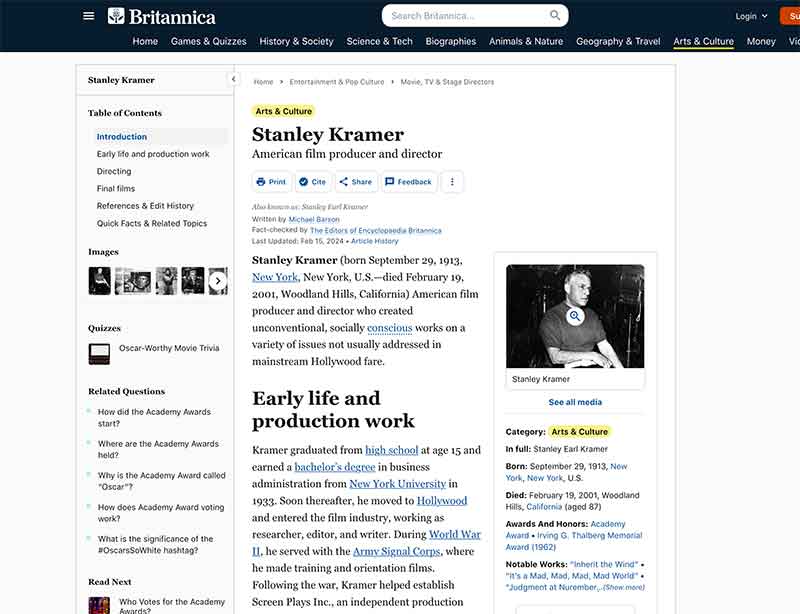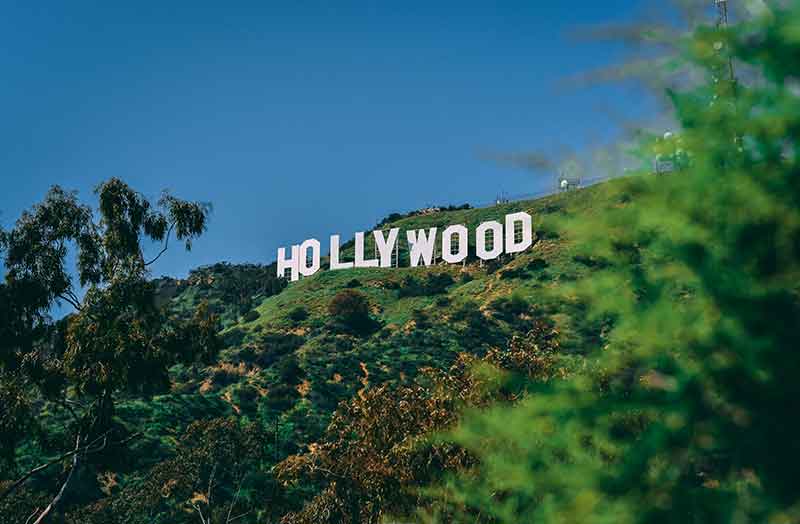The Palladium
Touring Hollywood by bus or foot there are plenty of examples of Art Deco architecture to be seen. Indeed, so many buildings here were built during Hollywood’s Golden era which coincided with the Art Deco movement and many still exist. The Palladium in Hollywood stands as an iconic entertainment venue renowned for its rich history and distinctive architectural style. Originally built in 1940 as a ballroom, the Palladium underwent a series of renovations over the years, culminating in its transformation into a premier concert hall and nightclub. Characterized by its Art Deco-inspired design, the Palladium features a striking façade adorned with geometric motifs, sleek lines, and ornate detailing, evoking the glamour and sophistication of Hollywood’s golden age. Inside, the grandeur continues with a spacious dance floor, sweeping balconies, and a soaring ceiling adorned with intricate plasterwork and sparkling chandeliers. The Palladium’s architectural style seamlessly blends vintage charm with modern amenities, providing a timeless backdrop for live performances, special events, and unforgettable experiences in the heart of Hollywood.

Palladium exterior Art Deco Hollywood tour
the 20th century, characterized by its bold geometric forms, lavish ornamentation, and embrace of modern materials and technologies. Emerging in the aftermath of World War I and reaching its zenith during the interwar period of the 1920s and 1930s, Art Deco represented a departure from the ornate styles of the past, embracing a sleek, streamlined aesthetic that reflected the optimism, dynamism, and glamour of the modern age. In this comprehensive analysis, we delve into the origins, characteristics, key elements, global impact, and enduring legacy of Art Deco architecture, exploring how it continues to captivate and inspire architects, designers, and enthusiasts around the world.
Origins and Influences:
The roots of Art Deco architecture can be traced back to the early 20th century, when rapid industrialization, technological advancements, and social upheaval ushered in a new era of creativity and innovation. Drawing inspiration from diverse sources such as Cubism, Futurism, Ancient Egyptian art, and the machine aesthetic, Art Deco sought to break free from the constraints of traditional styles and forge a bold new vision for the modern world. The term “Art Deco” itself derives from the 1925 Exposition Internationale des Arts Décoratifs et Industriels Modernes held in Paris, where the style made its international debut and captured the imagination of designers, architects, and tastemakers. The exhibition showcased a dazzling array of decorative arts, architecture, fashion, and luxury goods, setting the stage for the widespread adoption of Art Deco as a dominant cultural and aesthetic movement.
Characteristics and Key Elements:
Art Deco architecture is characterized by a distinctive blend of geometric shapes, symmetry, and decorative motifs that convey a sense of elegance, sophistication, and modernity. One of the hallmarks of Art Deco design is its emphasis on verticality, with buildings often featuring sleek, streamlined forms that soar skyward, punctuated by bold setbacks, towers, and spires. Facades are typically adorned with geometric patterns, sunbursts, chevrons, and stylized motifs inspired by nature, machinery, and ancient civilizations. Materials such as glass, steel, concrete, and polished stone are employed to create a sense of luxury and opulence, while interior spaces are marked by sweeping curves, dramatic staircases, and lavish ornamentation. Art Deco buildings often incorporate decorative elements such as bas-reliefs, murals, and mosaics that celebrate themes of progress, industry, and the human form. Moreover, Art Deco architecture embraces the integration of modern technologies and amenities, including electric lighting, air conditioning, and innovative structural systems, which further enhance the functionality and aesthetic appeal of buildings.
Global Impact and Spread:
Art Deco architecture quickly spread beyond its birthplace in Paris to become a global phenomenon, influencing architectural styles and urban landscapes around the world. From New York City to Shanghai, Miami to Mumbai, Art Deco left an indelible mark on skylines and cityscapes, reflecting the aspirations and aspirations of the modern era. In the United States, the Art Deco movement flourished during the Roaring Twenties and the Great Depression, with cities such as New York, Chicago, and Los Angeles embracing the style in the design of skyscrapers, hotels, theaters, and public buildings. The iconic Chrysler Building and Empire State Building in New York City, with their sleek silhouettes and intricate detailing, are among the most celebrated examples of Art Deco architecture in the United States. Meanwhile, in Europe, Art Deco influenced the design of landmarks such as the Palais de Chaillot in Paris, the Battersea Power Station in London, and the Palau de la Música Catalana in Barcelona. In Asia, cities such as Shanghai, Mumbai, and Tokyo embraced Art Deco as a symbol of modernity and progress, with iconic structures such as the Marine Building in Mumbai and the Park Hotel in Shanghai showcasing the style’s global reach and influence.
Enduring Legacy and Revival:
Despite falling out of favor after World War II, Art Deco architecture has experienced a resurgence in popularity in recent decades, fueled by a renewed appreciation for its elegance, craftsmanship, and historical significance. Preservation efforts have sought to protect and restore Art Deco landmarks, ensuring that these architectural treasures are preserved for future generations to enjoy. Moreover, contemporary architects, designers, and artists continue to draw inspiration from Art Deco’s bold forms, vibrant colors, and timeless appeal, infusing elements of the style into new buildings, interiors, and artworks. The revival of Art Deco is evident in projects such as the Burj Khalifa in Dubai, the Atlantis Paradise Island resort in the Bahamas, and the Miami Beach Art Deco Historic District, which pay homage to the style’s glamour and sophistication while incorporating modern amenities and technologies. Additionally, Art Deco continues to captivate popular culture through its influence on fashion, film, graphic design, and interior decor, serving as a source of inspiration for creatives across disciplines. As we look to the future, Art Deco architecture remains a symbol of innovation, optimism, and human creativity, reminding us of the enduring power of design to shape our world and elevate the human experience.
Conclusion:
In conclusion, Art Deco architecture stands as a testament to the spirit of innovation, optimism, and modernity that defined the early 20th century. With its bold geometric forms, lavish ornamentation, and embrace of modern materials and technologies, Art Deco represented a departure from the past and a bold leap into the future. From its origins in Paris to its global spread and enduring legacy, Art Deco continues to captivate and inspire architects, designers, and enthusiasts around the world. As we celebrate the rich history and timeless appeal of Art Deco architecture, we are reminded of its ability to transcend time and place, connecting us to the aspirations, achievements, and dreams of generations past and present.
















